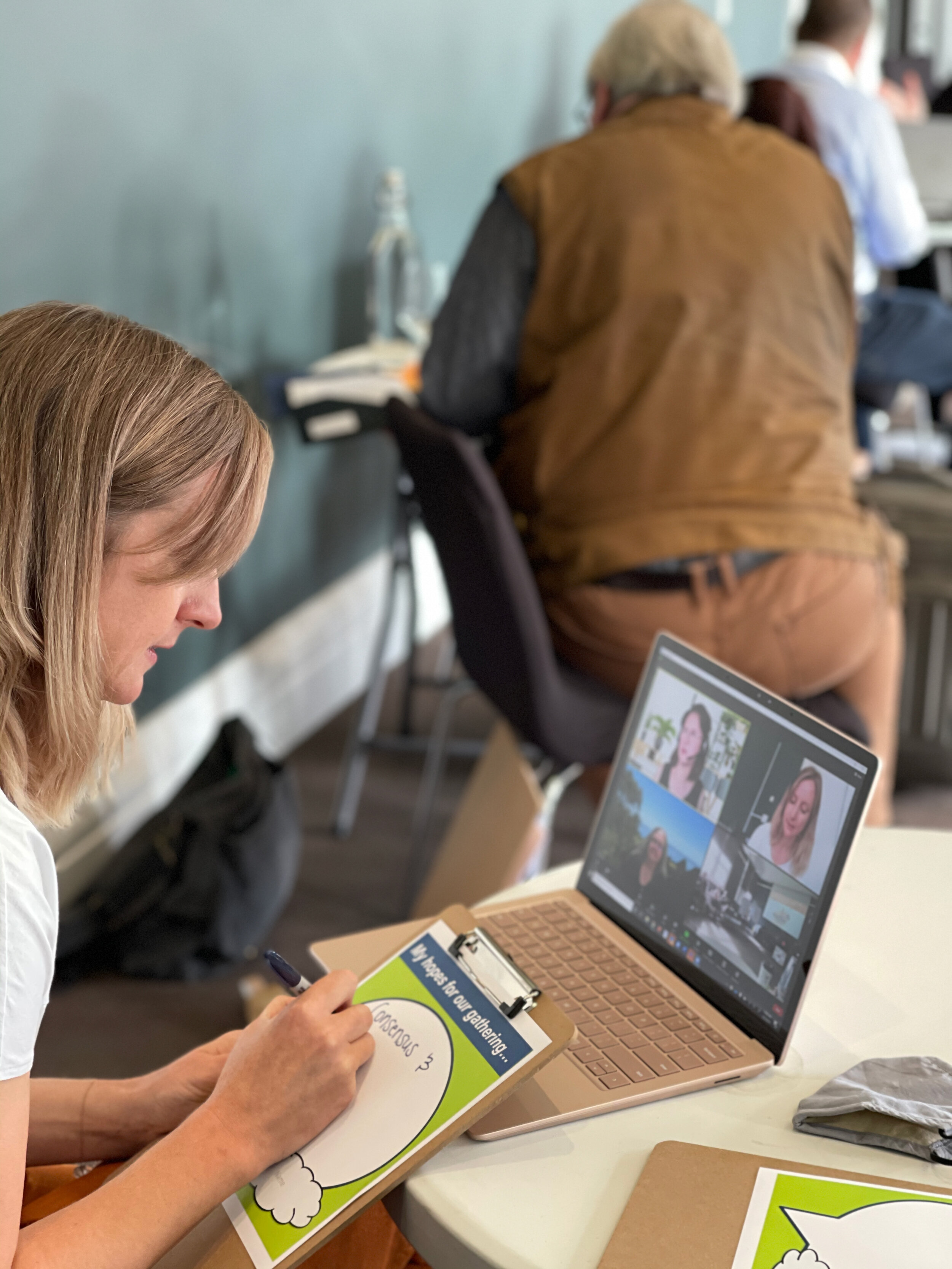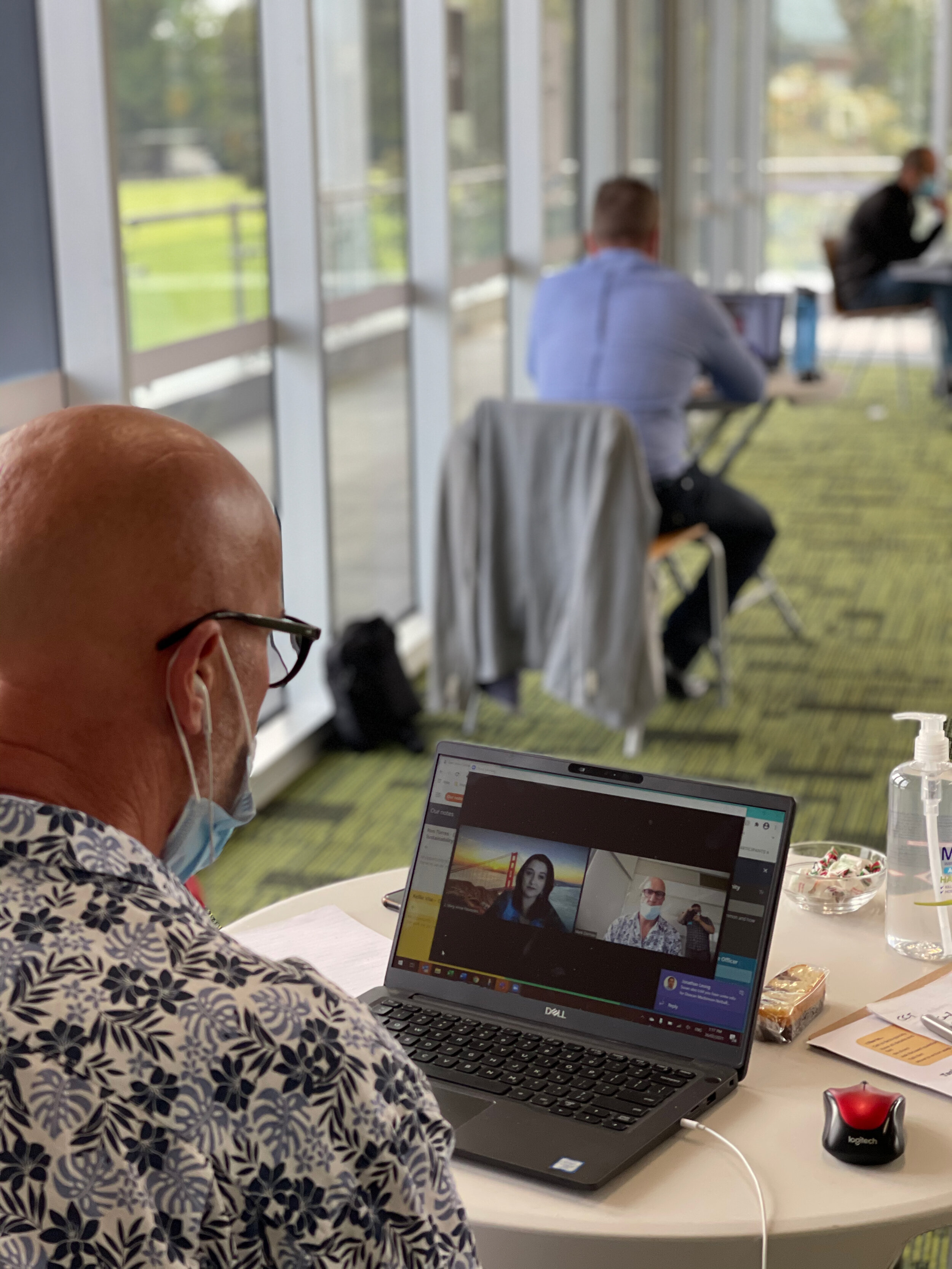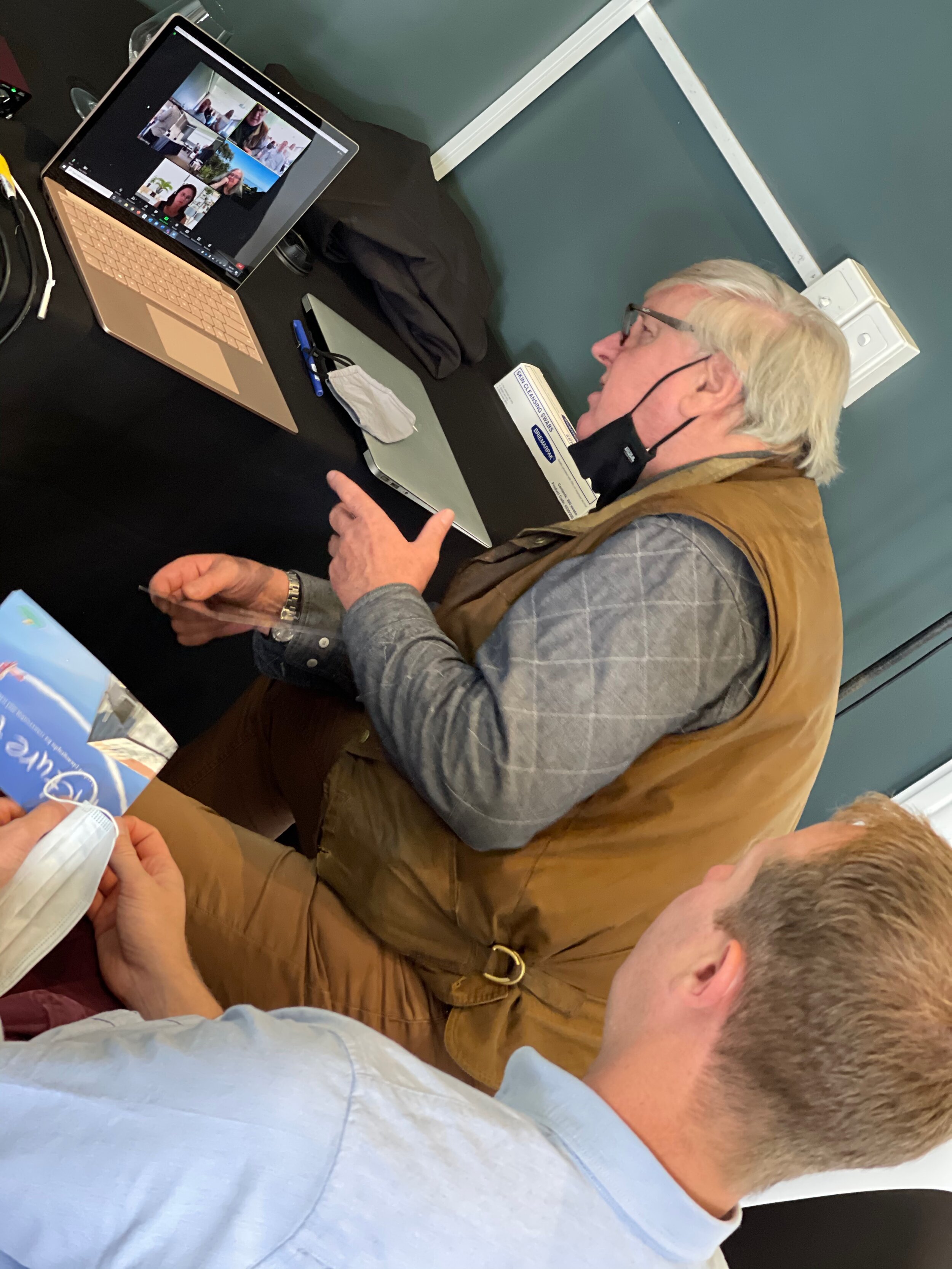As we start ‘spreading our wings’ and facilitating more face-to-face sessions we are finding new ways to mix up our processes and blending our insights from the last 12 months.
As a result we have coined a new term ‘vrooming’ – this is when we blend the face-to-face and virtual facilitation at the same time to bring the best of both worlds together.
In February we shared with you some learnings from our move to face-to-face facilitation. We touched on that:
People did not maintain physical distance, and this required forethought to make sure that we all remain safe (including room set up, wiping things down and activities that respect the physical distance requirements).
Catering is absolutely an essential component to our facilitations, however careful planning is required.
BYO device in the room is the new approach and this looks like it will remain with us for some time yet.
To continue on our learning journey we thought we would share some new insights….
1. Vrooming - when interaction is mediated between people in the room and people who join online
People are much more equipped now to be in a room while conversing with people who have joined virtually. This is a fantastic way to provide greater accessibility and inclusiveness from a diverse group of participants. It also makes it easier for those juggling priorities and/or those who have a long distance to travel to still participate. It does require thinking carefully about the set up, including ensuring people BYOD (Bring Your Own Device).
Tip: Participants will need to bring headphones to manage the audio in the room.
2. Make the time for reconnection
As we progress to more face-to-face facilitations, we are finding that people are embracing the opportunity to meet after long periods online. In some cases this is an overwhelming experience - they might be meeting people for the first time face-to-face that they have been working with for over a year. This means we need to slow down and give them the time to connect and settle into the room.
Tip: Plan for this, allocate enough time and enjoy the delight as people reconnect!
3. Allowing for meaningful pre-work and thinking
We are finding that clever pre-session online tools - even in the face-to-face setting - can be used in a way that genuinely captures data, and supports participants to process information and work through the task at hand. It provides time for people to think, and to evolve and build their ideas.
Participants are very willing to take this step – consider matters before the session and collect their thinking meaningfully when they are together. The last 12 months have shown us that people are more comfortable with online tools and there is an opportunity to bring this into our face-to-face facilitation.
Tip: More individual work prior to big forums means the conversation in the room is supercharged
4. The chaperone effect
One way to maximise participation and inclusiveness of online participants in a process - when blended with the ‘off-line’ or face-to-face participants - is for a facilitator to chaperone the online participant/s around to the small groups. To do this, the chaperone moves the laptop participants physically around to their designated groups, provides spaces for the small group discussions that maximises sound and interactivity, manages technical issues, and explains the tasks in a more clear fashion when the broad scale room instructions are hard to hear. By having an ‘online chaperone’ the virtual participants can still get a similar experience to those in the room.
“Today was a very important meeting, setting up organisational strategy, and because I was not attending in person, I was nervous I would not have the opportunity to contribute, be able to hear or be heard. Luckily, the experience exceeded my expectations.
In fact, being carried around, seeing the room from every angle, and in some cases even having multiple angles of the same conversation, I almost felt like I had a better seat than if I was there in person. I felt I was just as engaged as I would be in person.
”
Tip: Move around the room with the laptop, ensuring they can hear the conversation and to support the framing of the activity or task.
ENJOYED THIS POST?
Stay in the know! Get new posts, actionable ideas and fabulous free resources delivered to your inbox - subscribe to our monthly e-newsletter 'the Discussion'.





